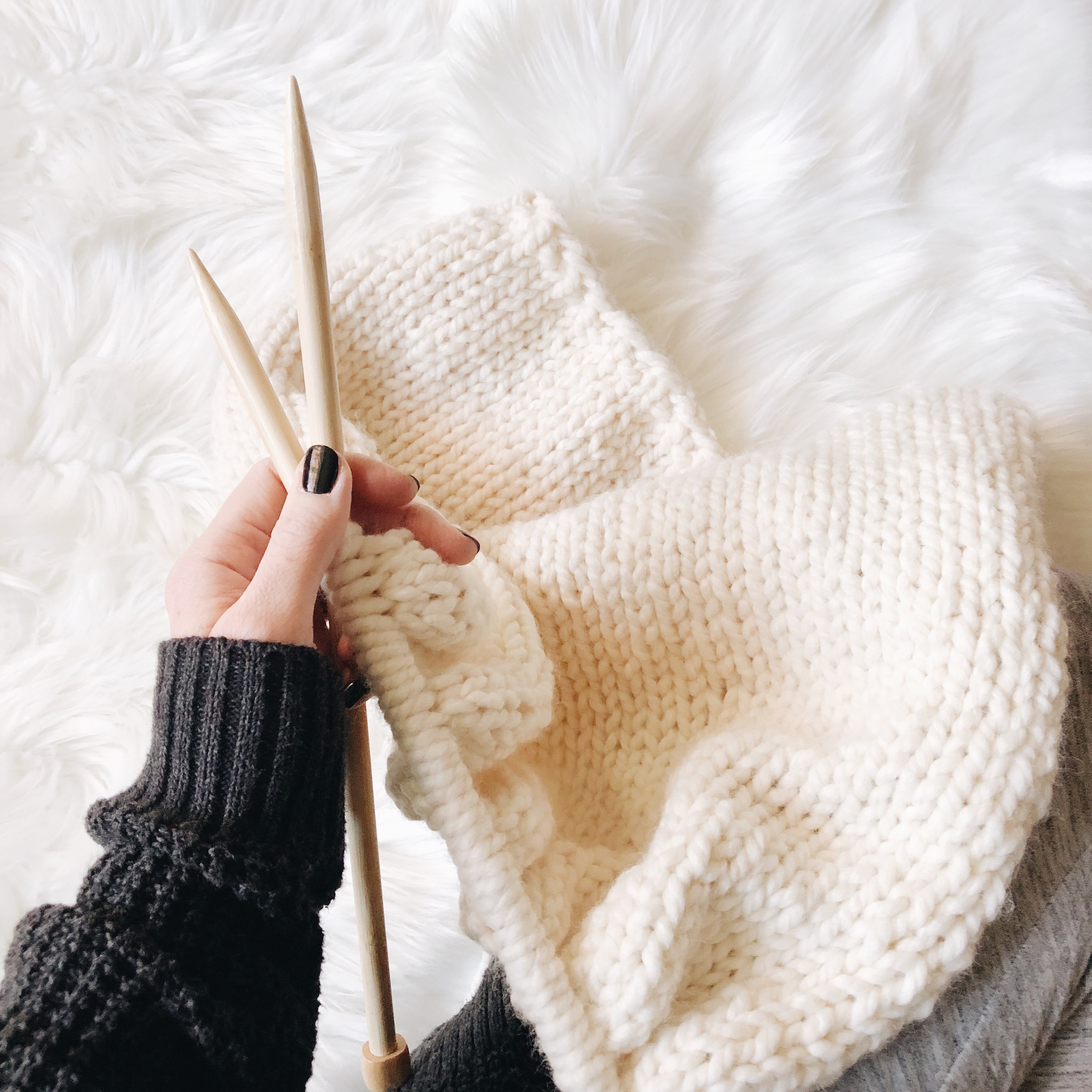BASICS TO GET YOU STARTED
With knitting, there is always something to learn. This guide provides just the very basics to get you started.
Yarn
Yarn comes in a variety of weights, materials, and textures. As you try out and become familiar with different types of yarns, you will start to prefer some over others. When choosing yarn, check your pattern carefully and choose a yarn with the suggested yarn weight.
Splits happen. It is very common to come across splits (or knots) while working with yarn. When this happens, you can either ignore the split and keep knitting or cut your yarn and reattach it using your preferred method.
Needles
Knitting needles come in a variety of materials and sizes. Straight needles are often used for knitting flat pieces and circular needles are often used for knitting in the round (but can also be used to knit flat). When finding the right size, look for the width in millimeters (mm) and the length in inches (in) or centimeters (cm). Knitting patterns will list the size needed to complete your project.
Care
When caring for your finished knits, hand washing and laying flat to dry is recommended. Piling and shedding is common and often reduces over time.

CAST ON
1. Pull end/tail of yarn over needle toward you making sure you have plenty of length for casting on. The more stitches you need to cast on, the more length you will need.
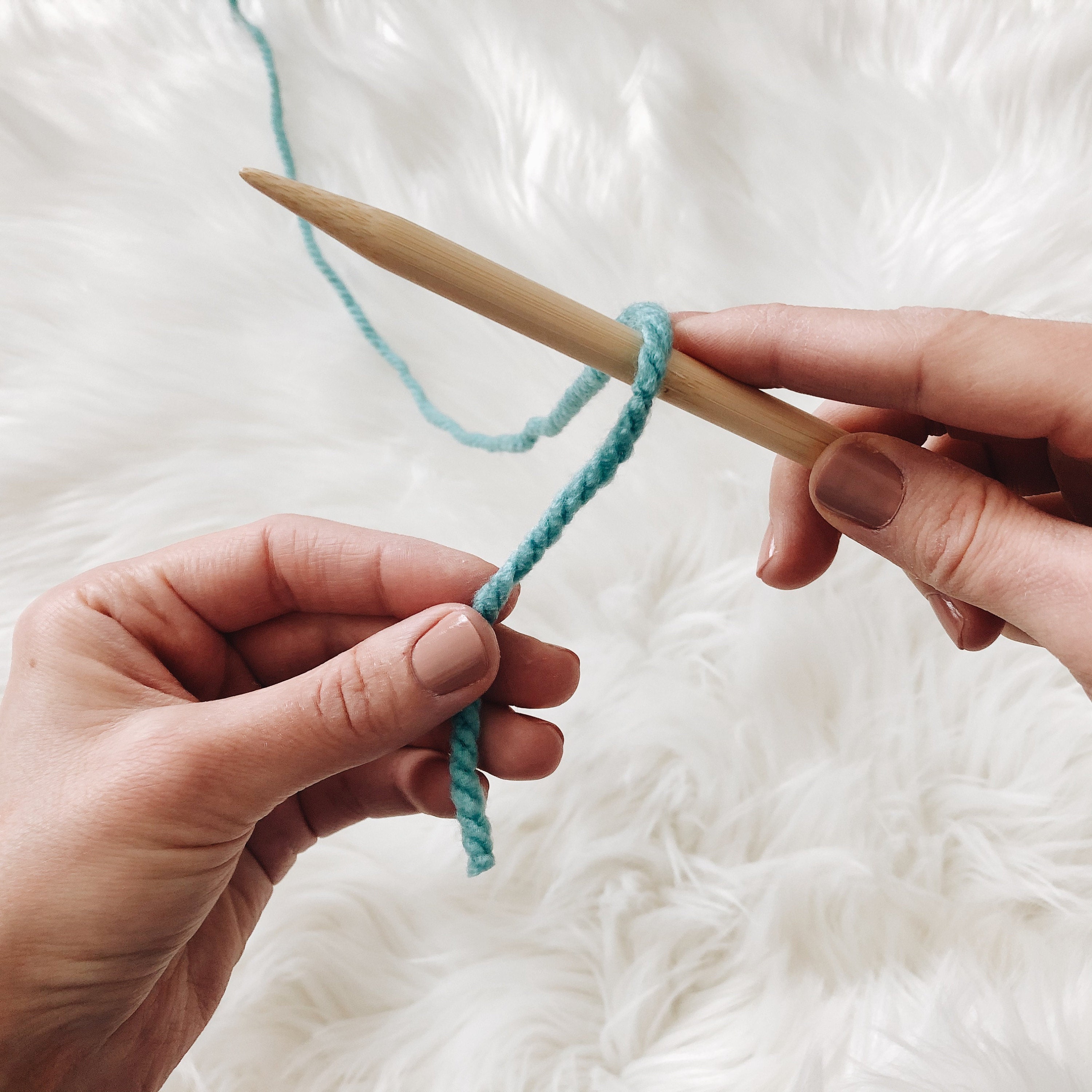
2. Pull yarn back making a triangular shape using your thumb and index finger.
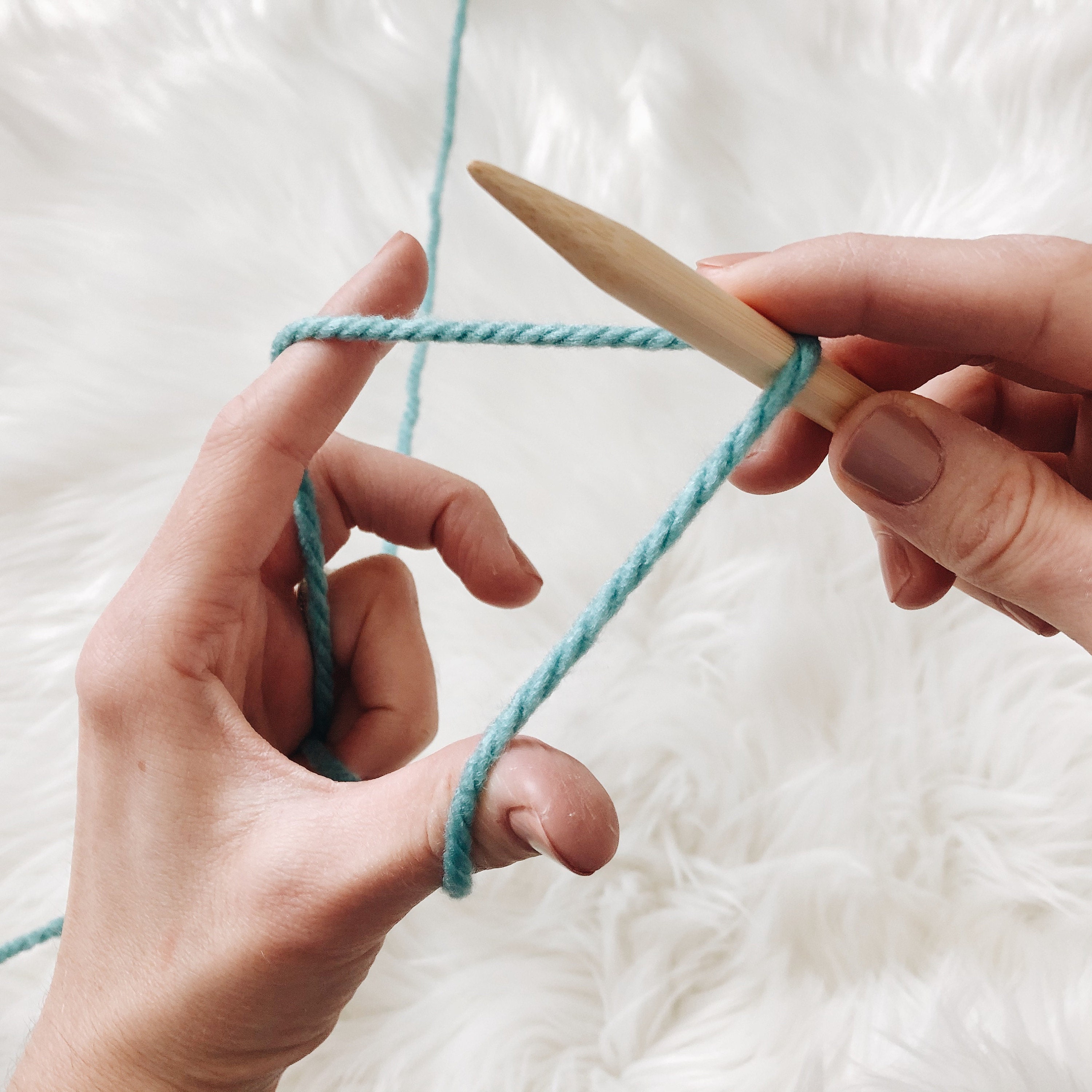
3. Use needle to scoop up the yarn around your thumb. Needle goes under and up.
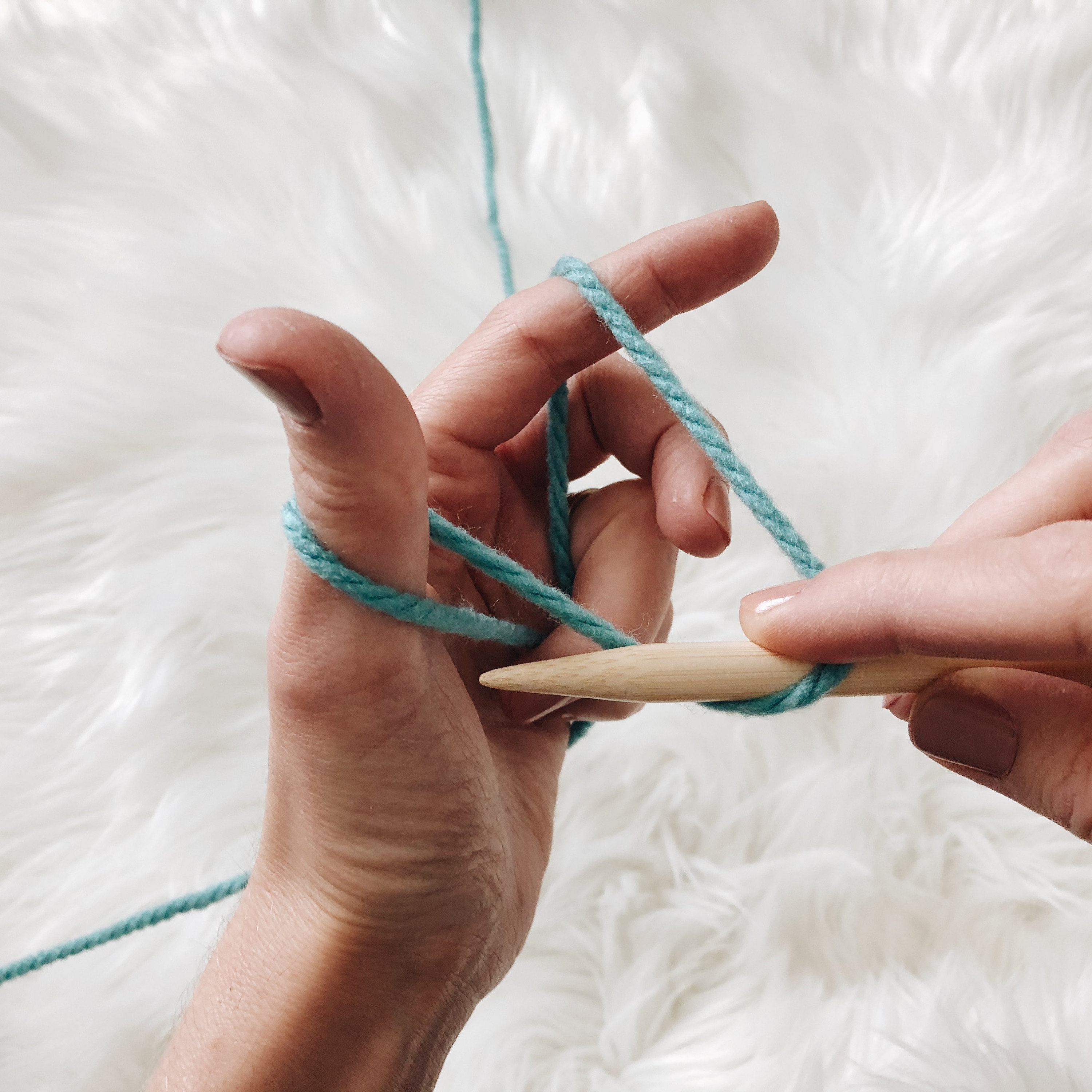
4. Pull needle up and towards the yarn on your index finger.

5. Use needle to scoop up the yarn around your index finger. Needle goes up and around.
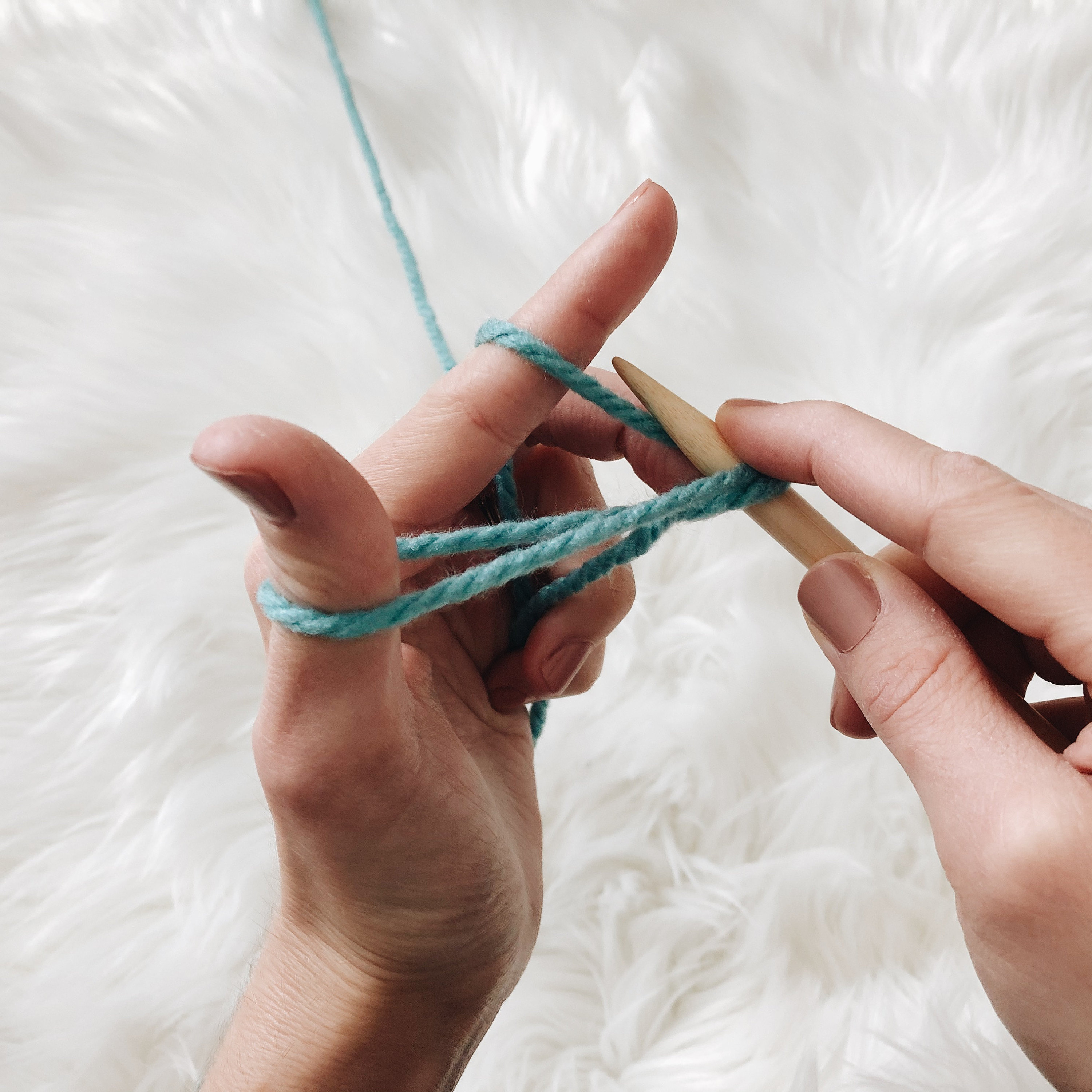
6. Pull needle and yarn towards you and then up.
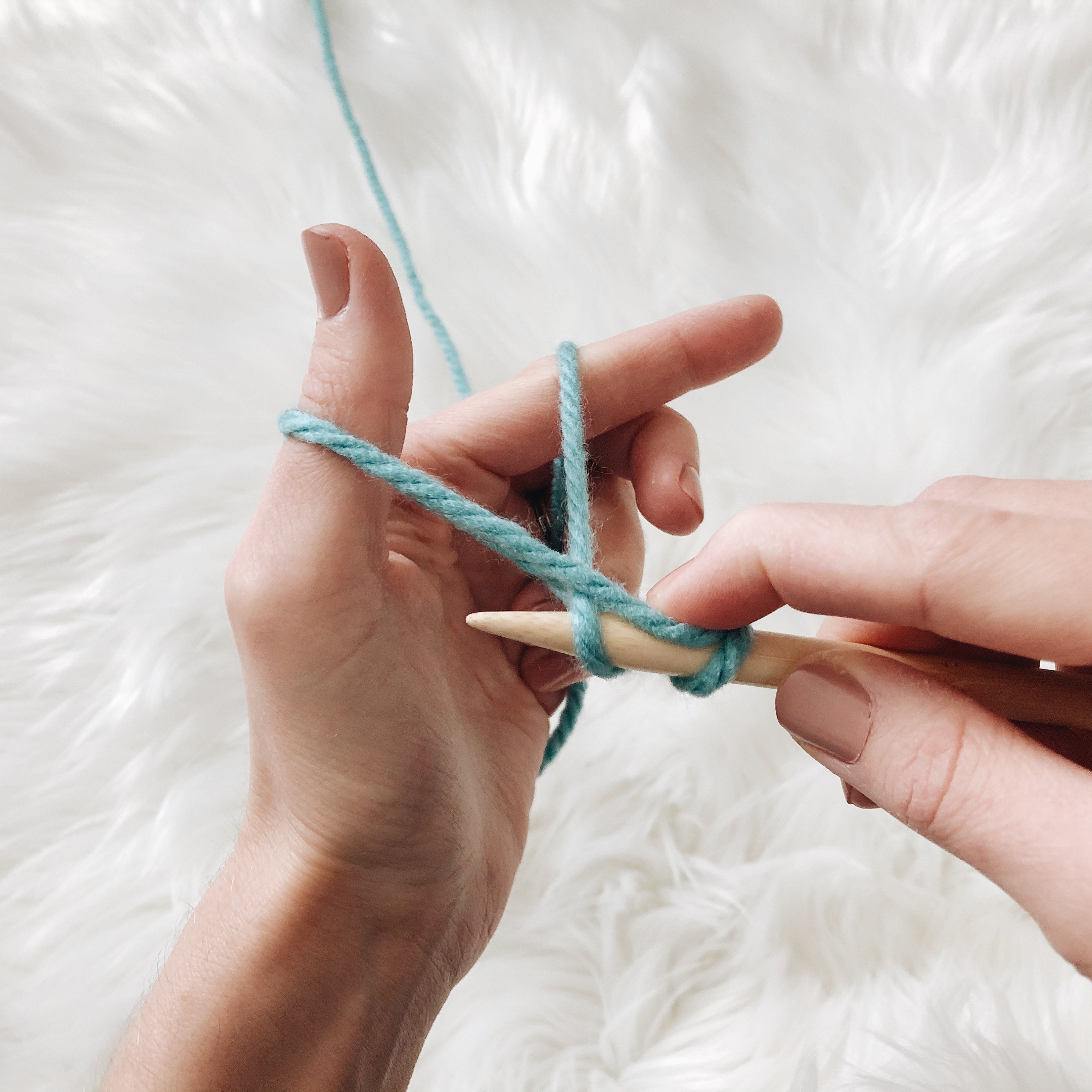
7. Pull needle up creating a stitch.This photo shows a cast on 2 stitches.
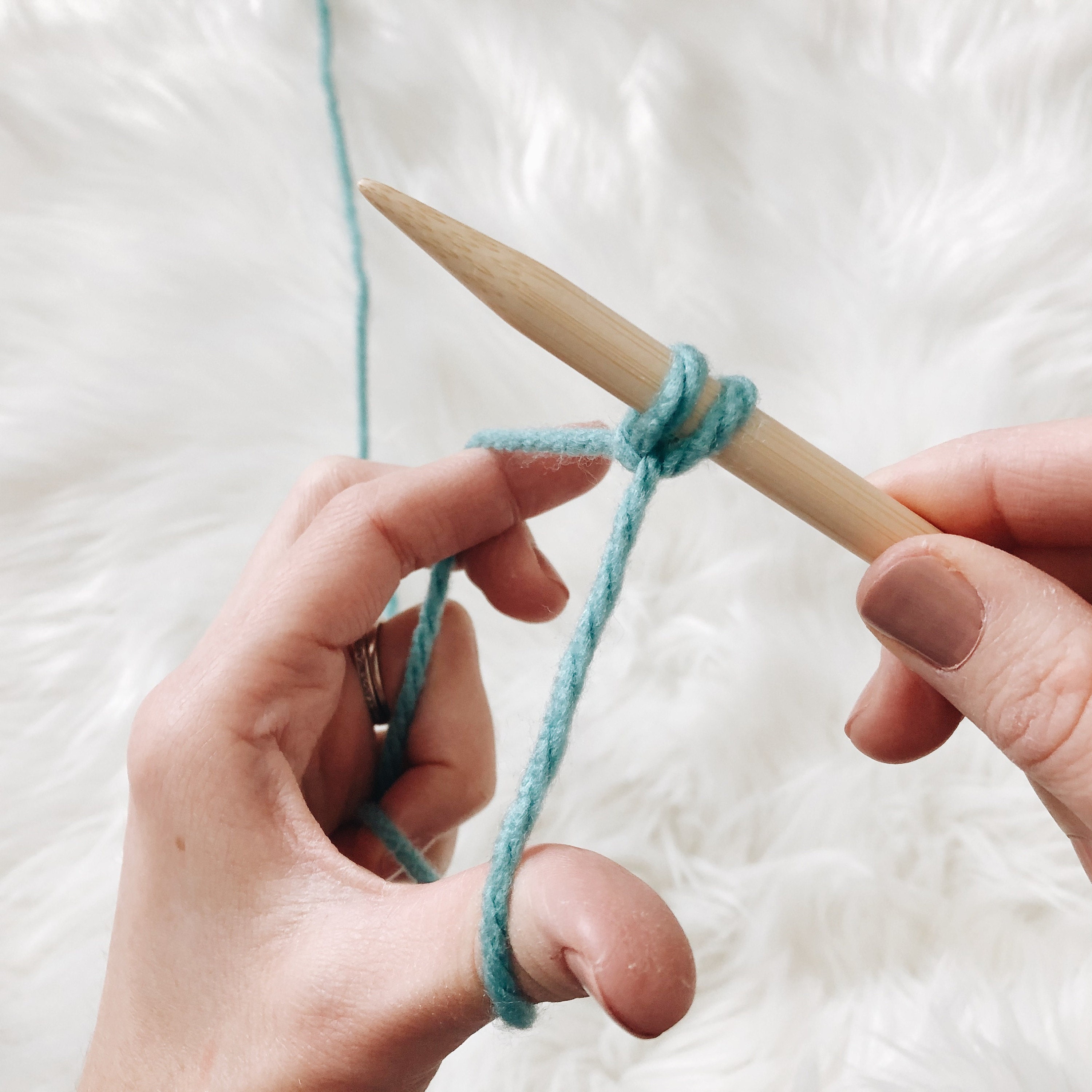
8. Repeat until you have the number of stitches your pattern calls for. This photo shows a cast on 10.
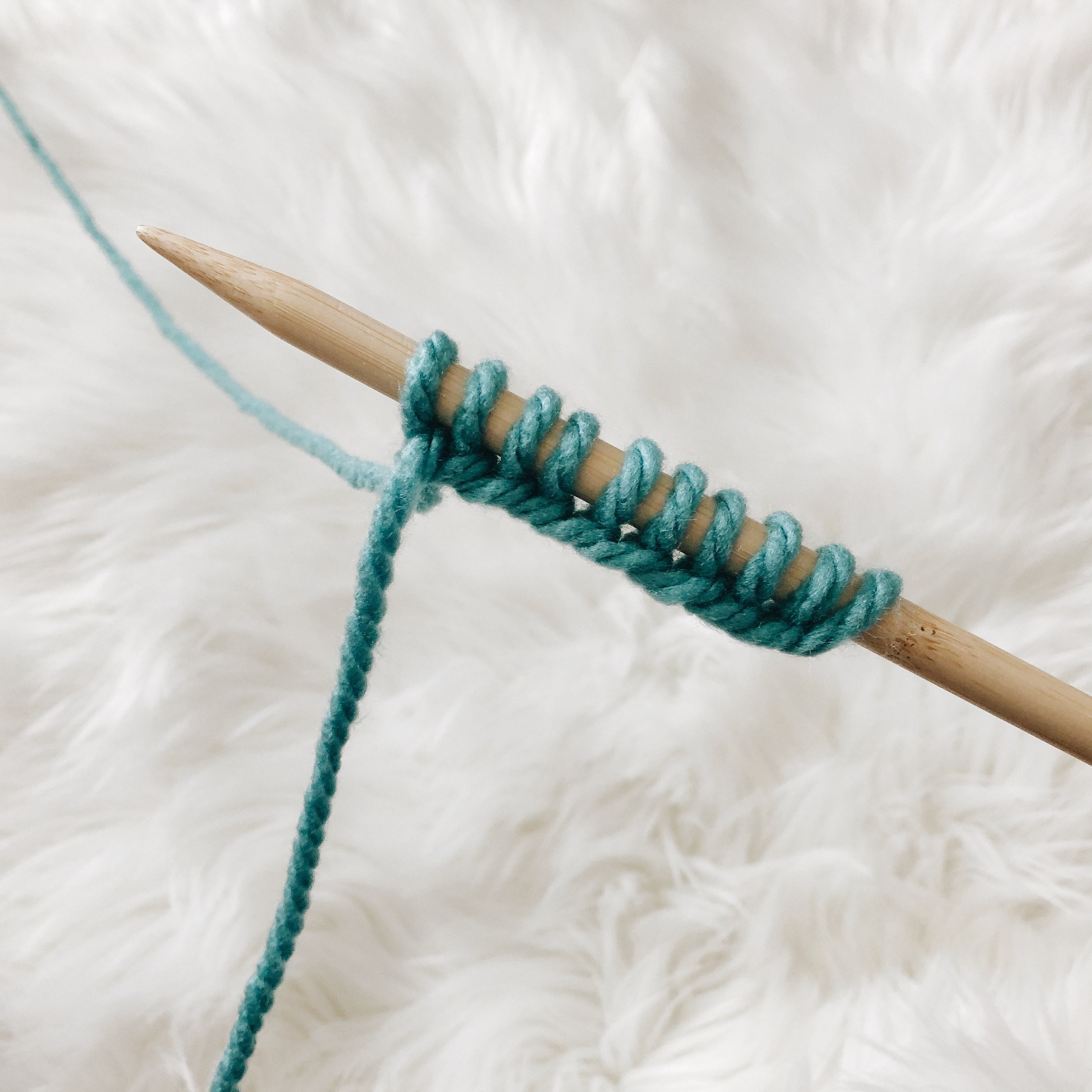
Click here for video support: How To Longtail Cast On
KNIT
1. Hold the needle with stitches in your left hand and the other needle (called the working needle) in your right hand.
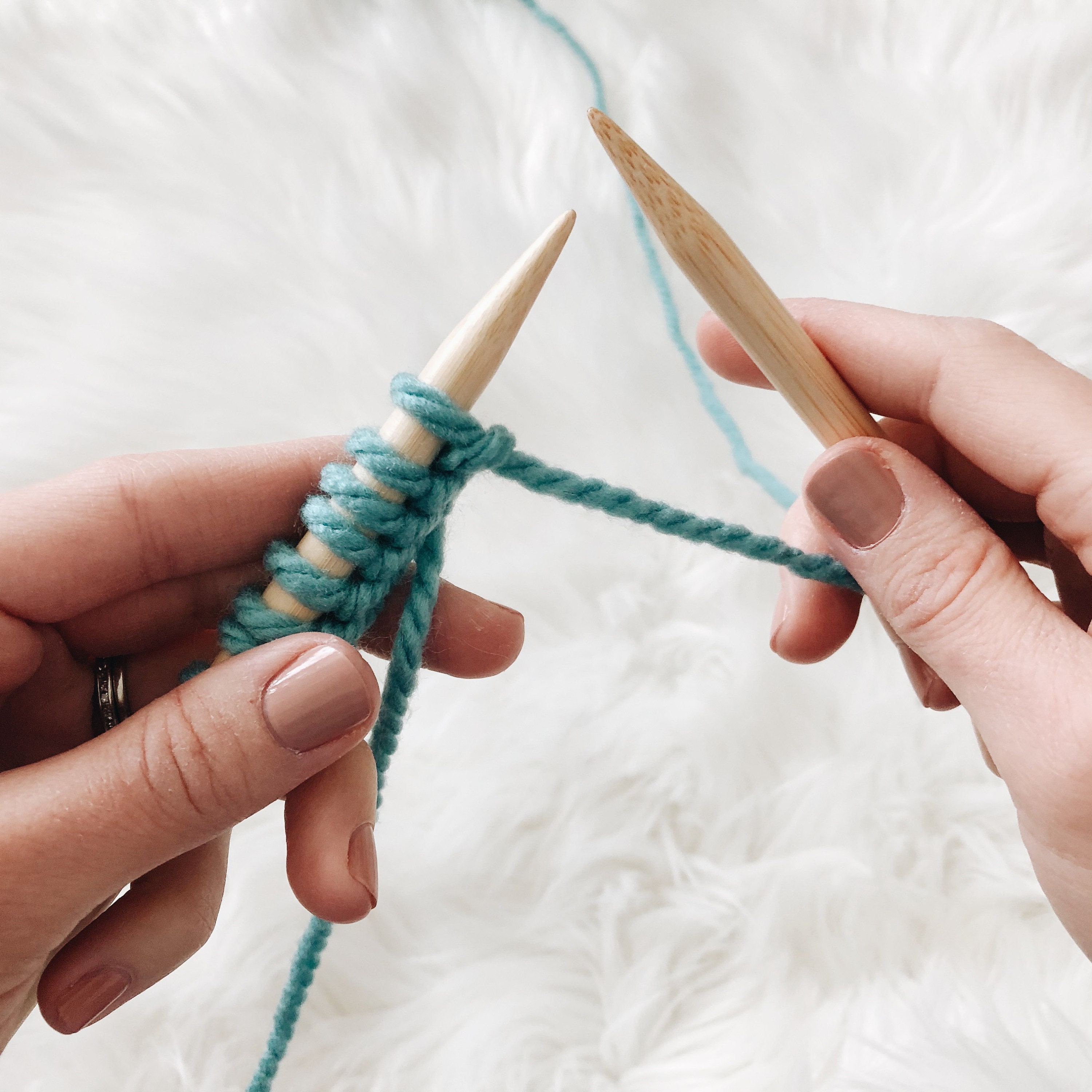
2. With your yarn in back away from you, insert working needle behind left hand needle under and into stitch.
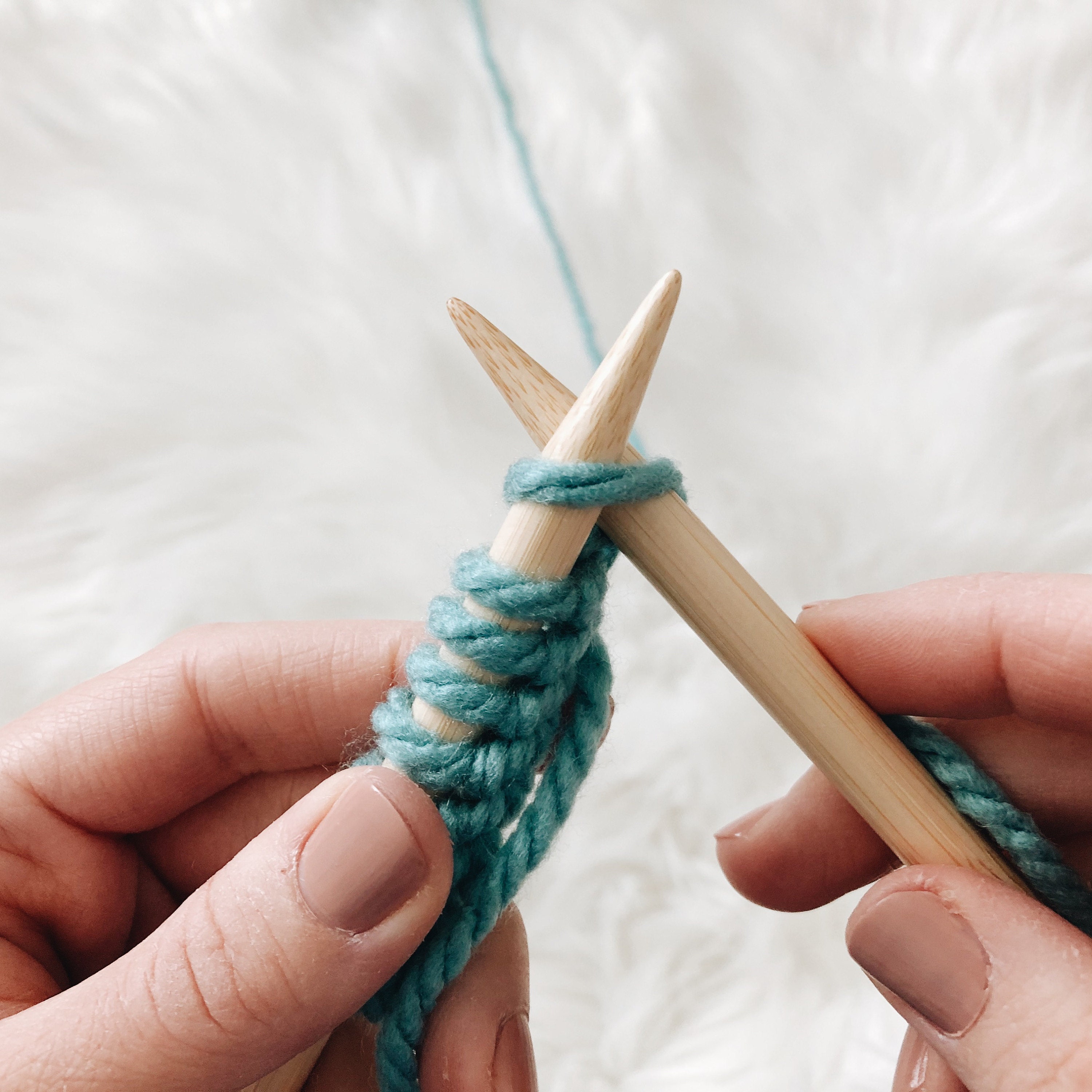
3. Wrap yarn around the back of the working needle and toward you.
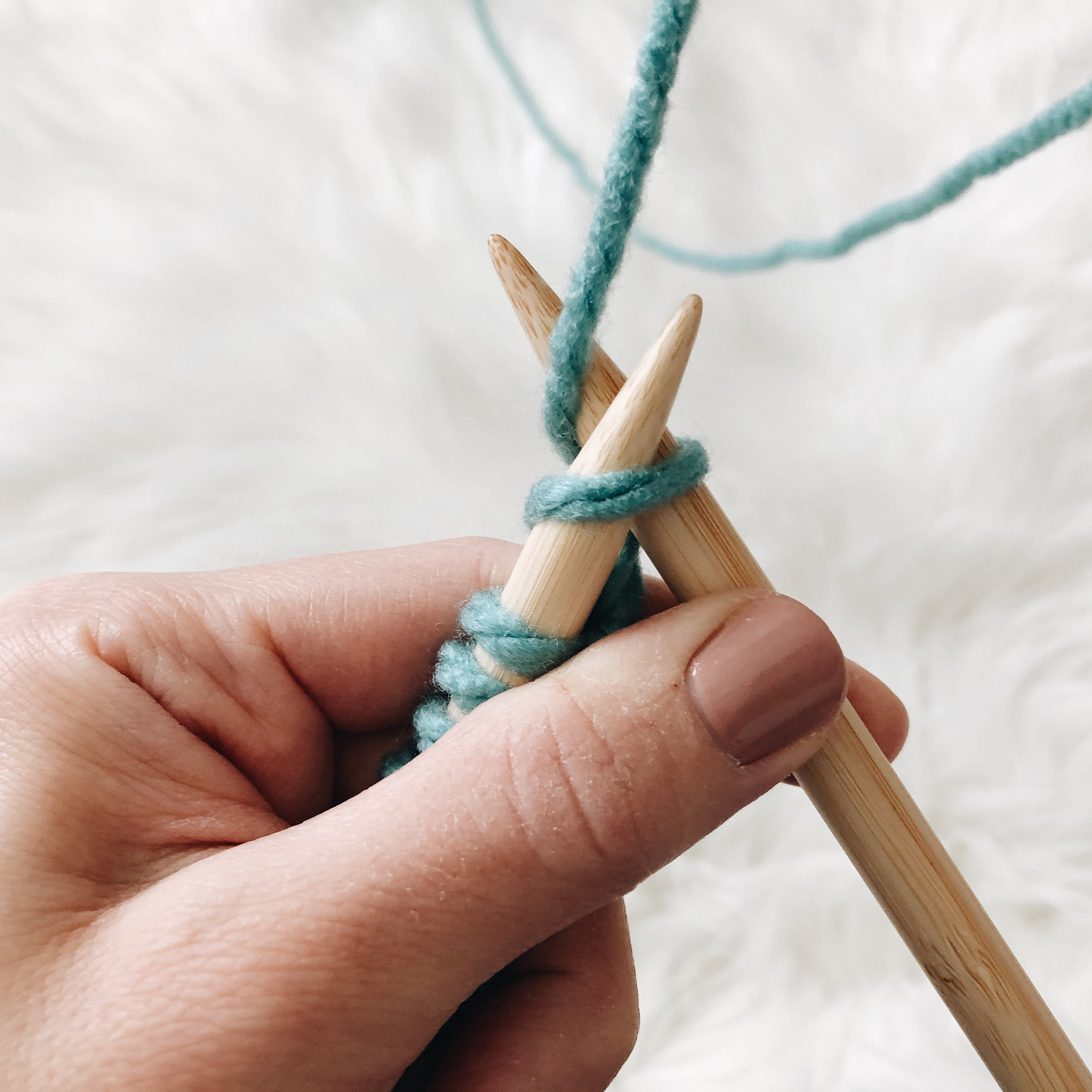
4. Carefully push working needle down and through the stitch making sure your yarn stays wrapped around the working needle.

5. Bring working needle toward you and in front of left hand needle.
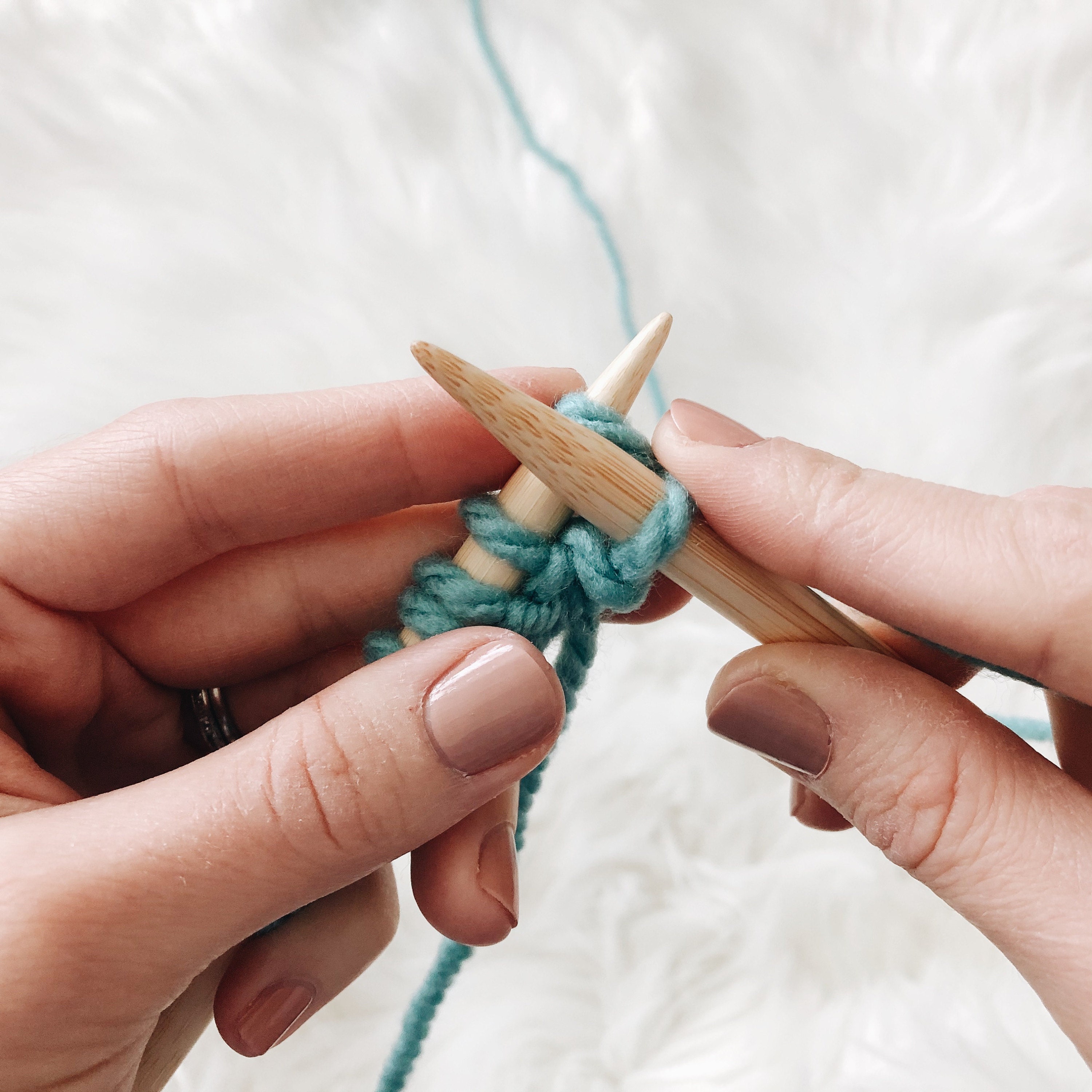
6. Pull working needle up and away from left hand needle.
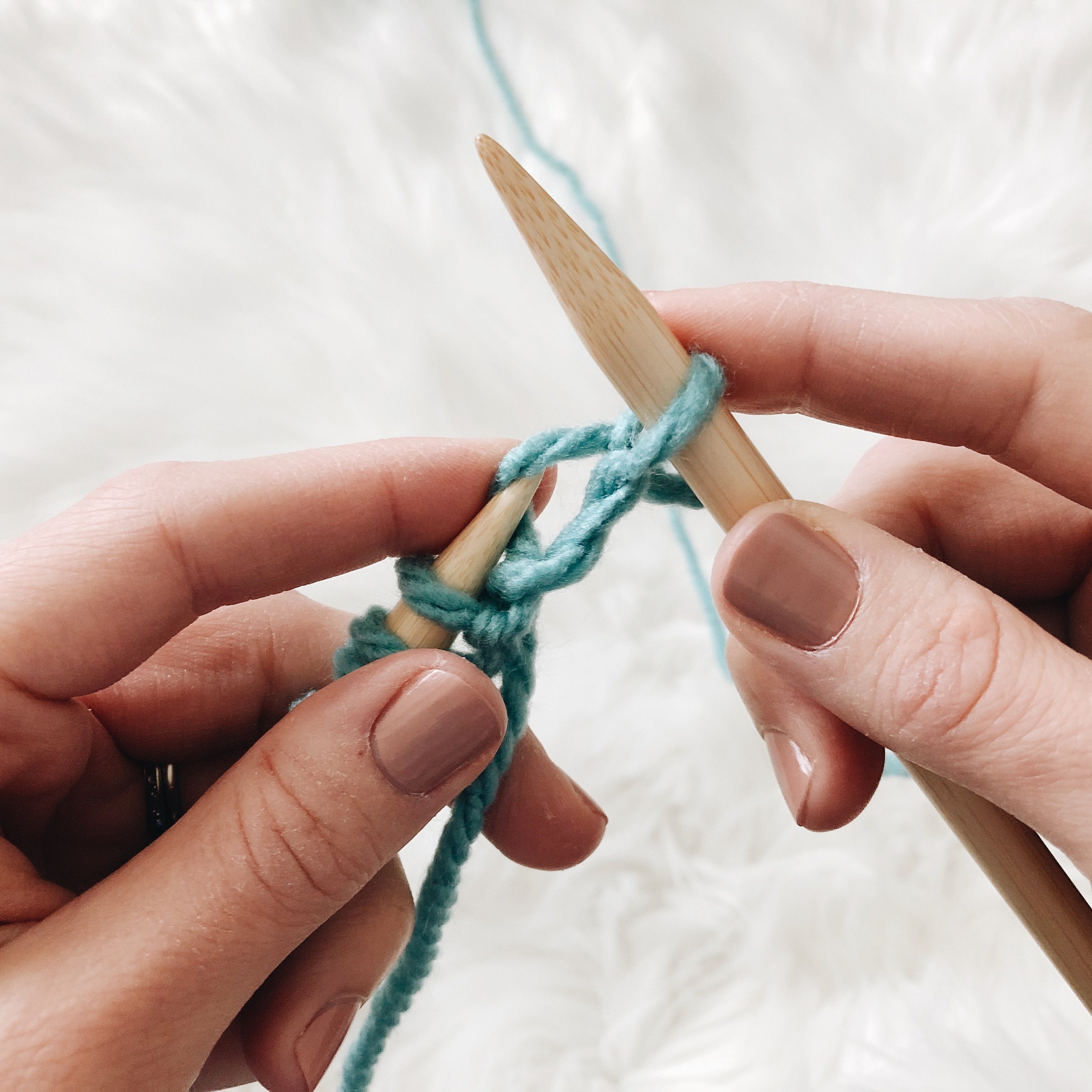
7. Continue pulling working needle up until old stitch pops off and new stitch is secure on the working needle.

8. Repeat until you have all your new stitches on your working needle. This completes one row and now the left hand needle becomes your working needle.
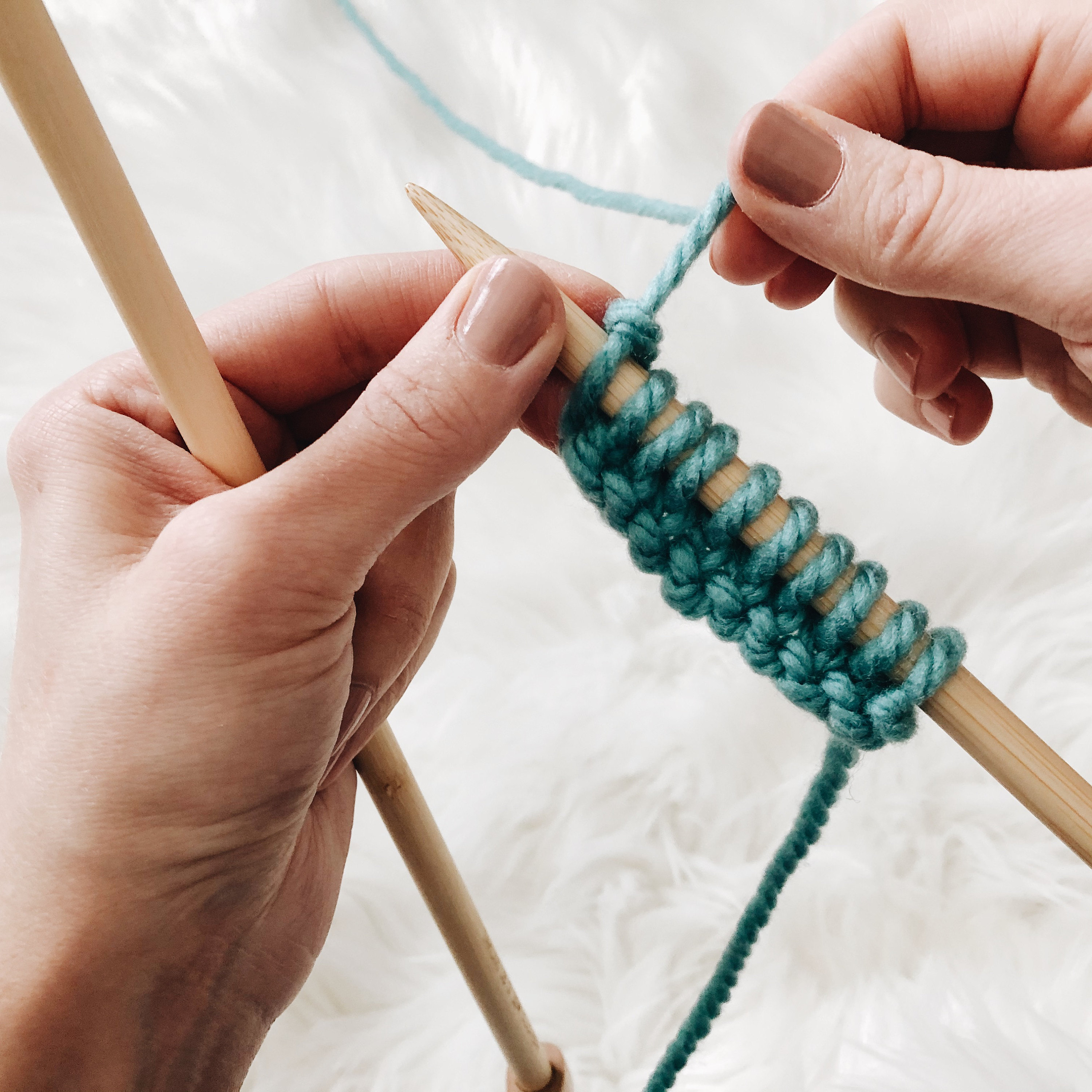
Click here for video support: How To Knit Stitch
PURL
1. Purling is basically the opposite of knitting. With knitting, think: BACK. With purling, think: FRONT. With your yarn in front toward you, insert working needle in front of left hand needle under stitch.
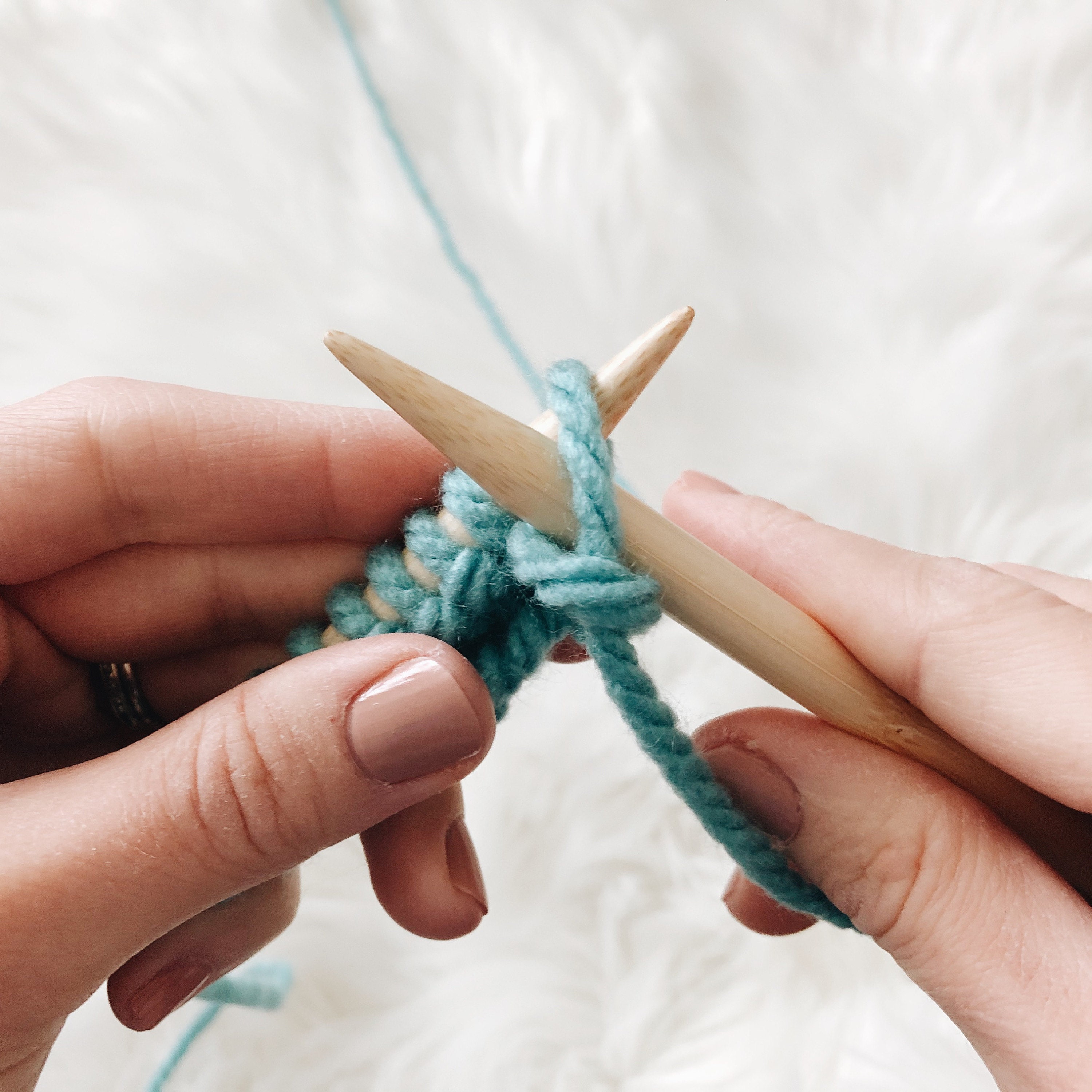
2. Wrap yarn around the back of the working needle toward you.
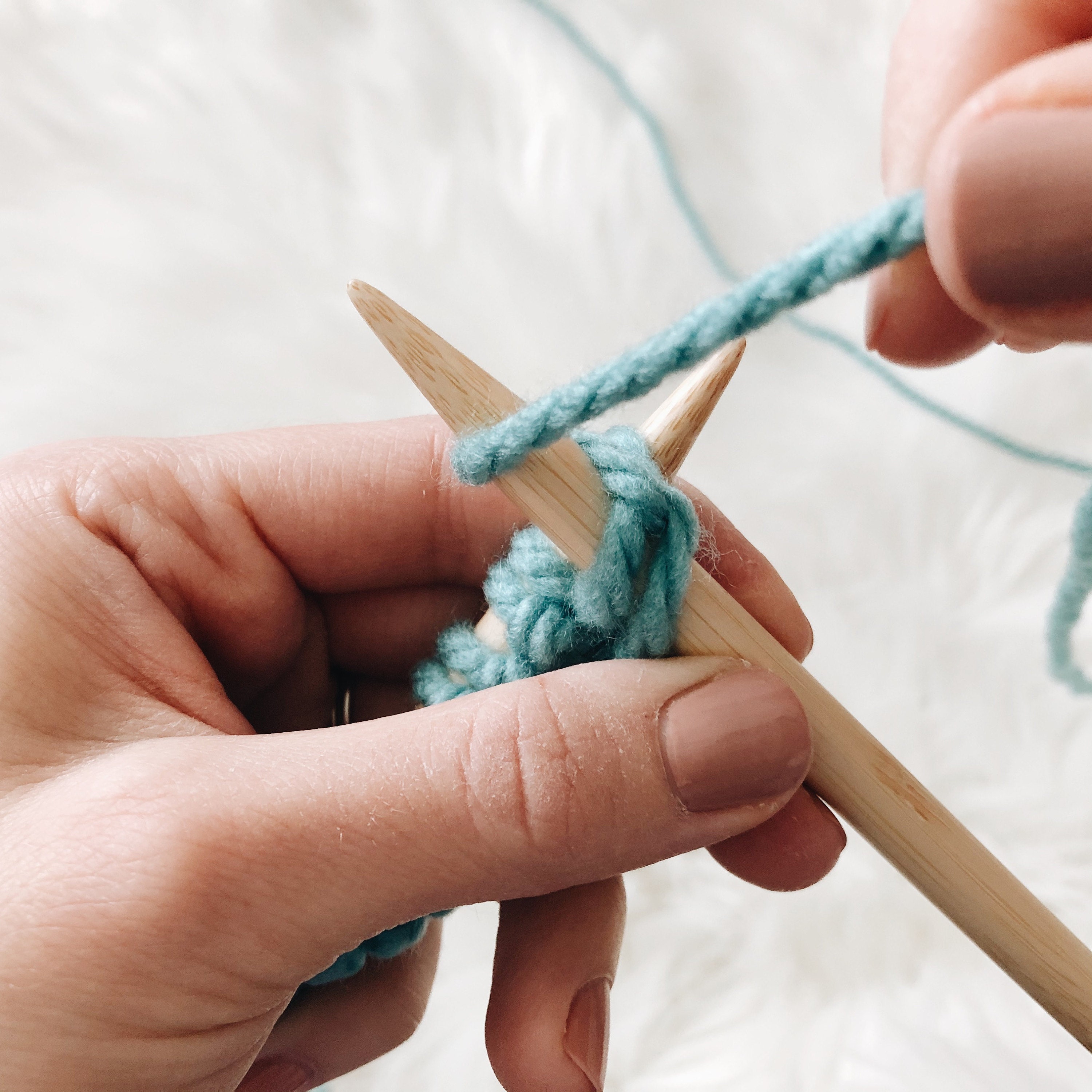
3. Carefully push working needle down and away from you making sure yarn stays wrapped around working needle.
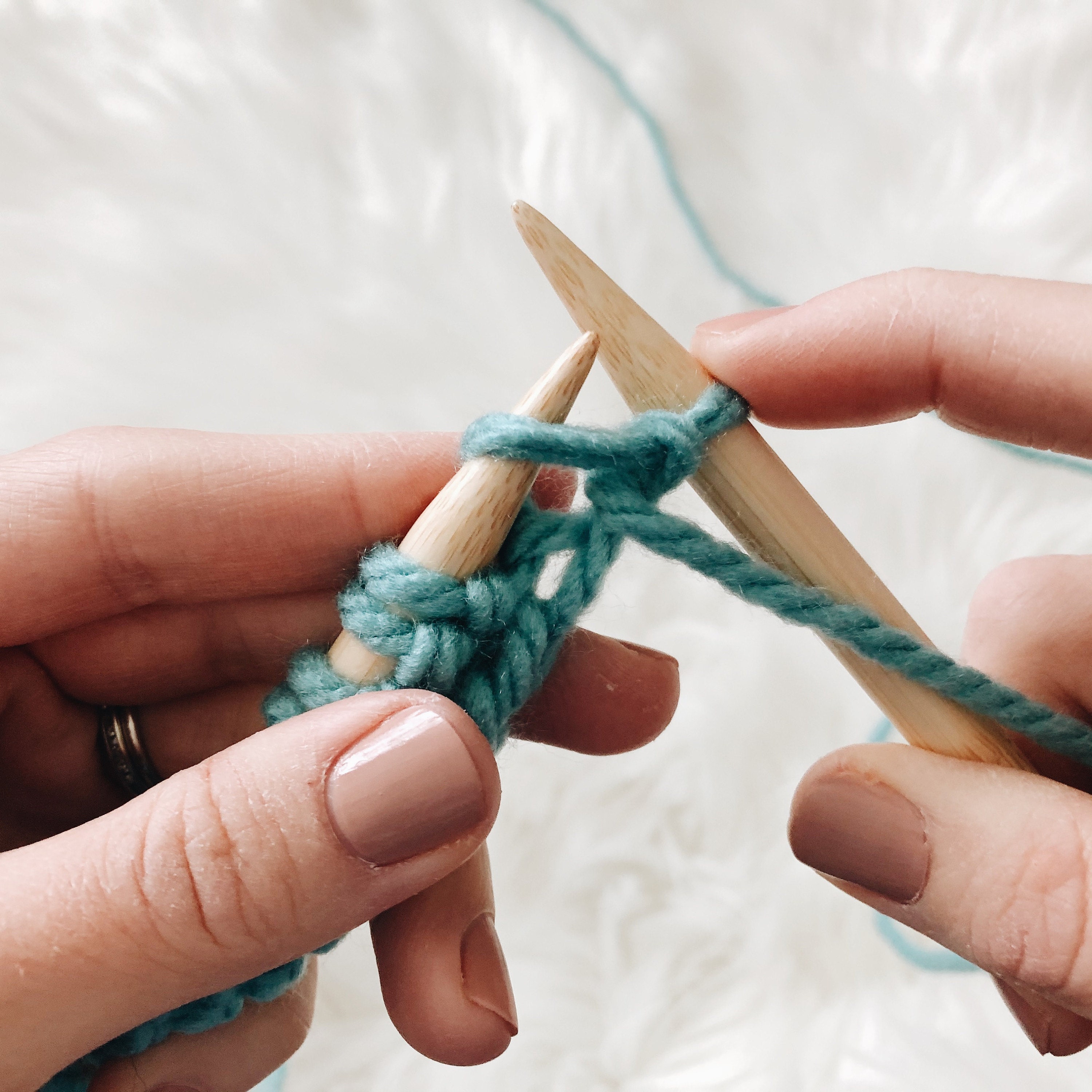
4. Continue pulling working needle up until old stitch pops off and new stitch is secure on the working needle. When working in rows, if you continue to knit a row and then purl a row, you are working in stockinette stitch.
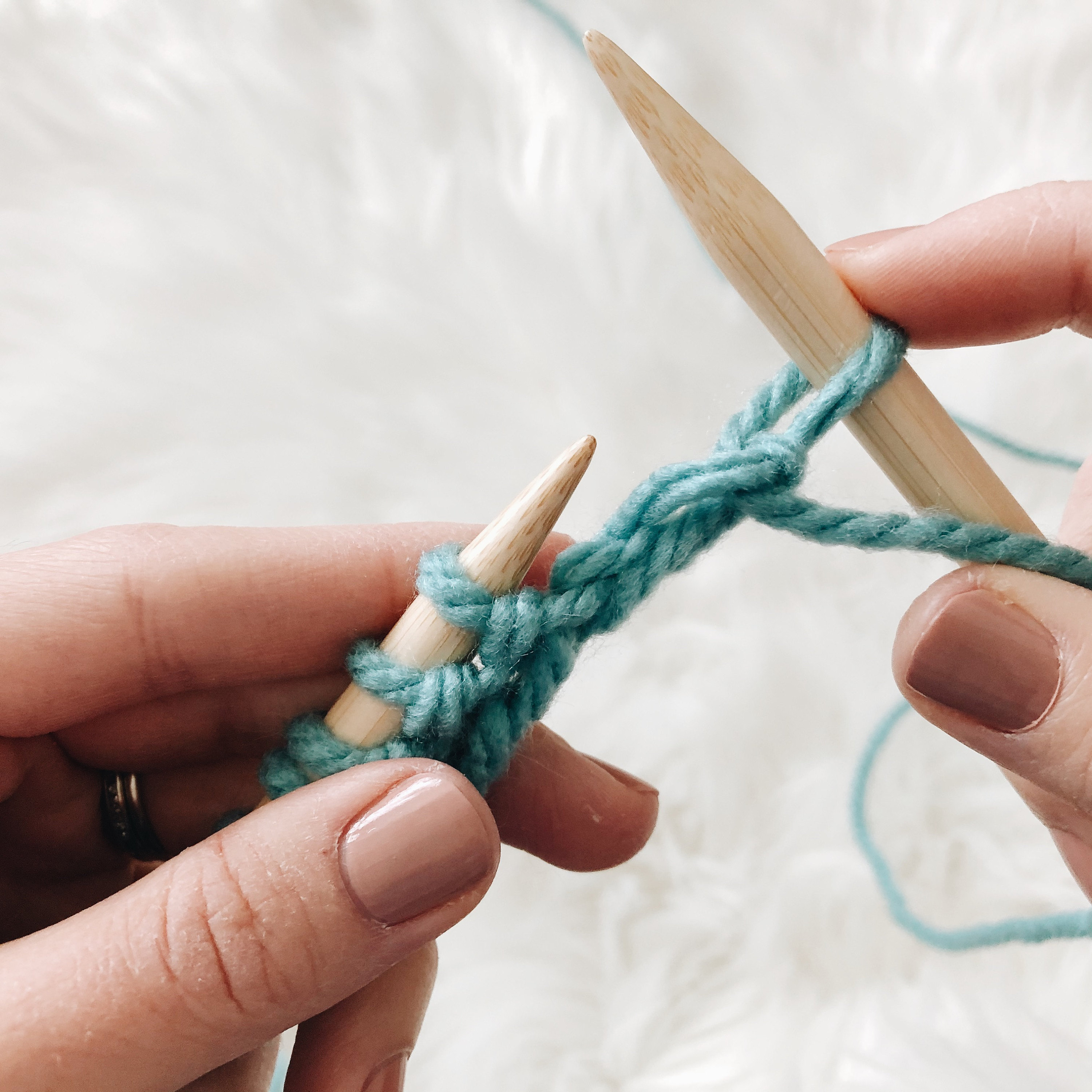
Click here for video support: How To Purl Stitch
CAST OFF
1. Knit two stitches. You need two stitches on your needle to cast off one stitch.
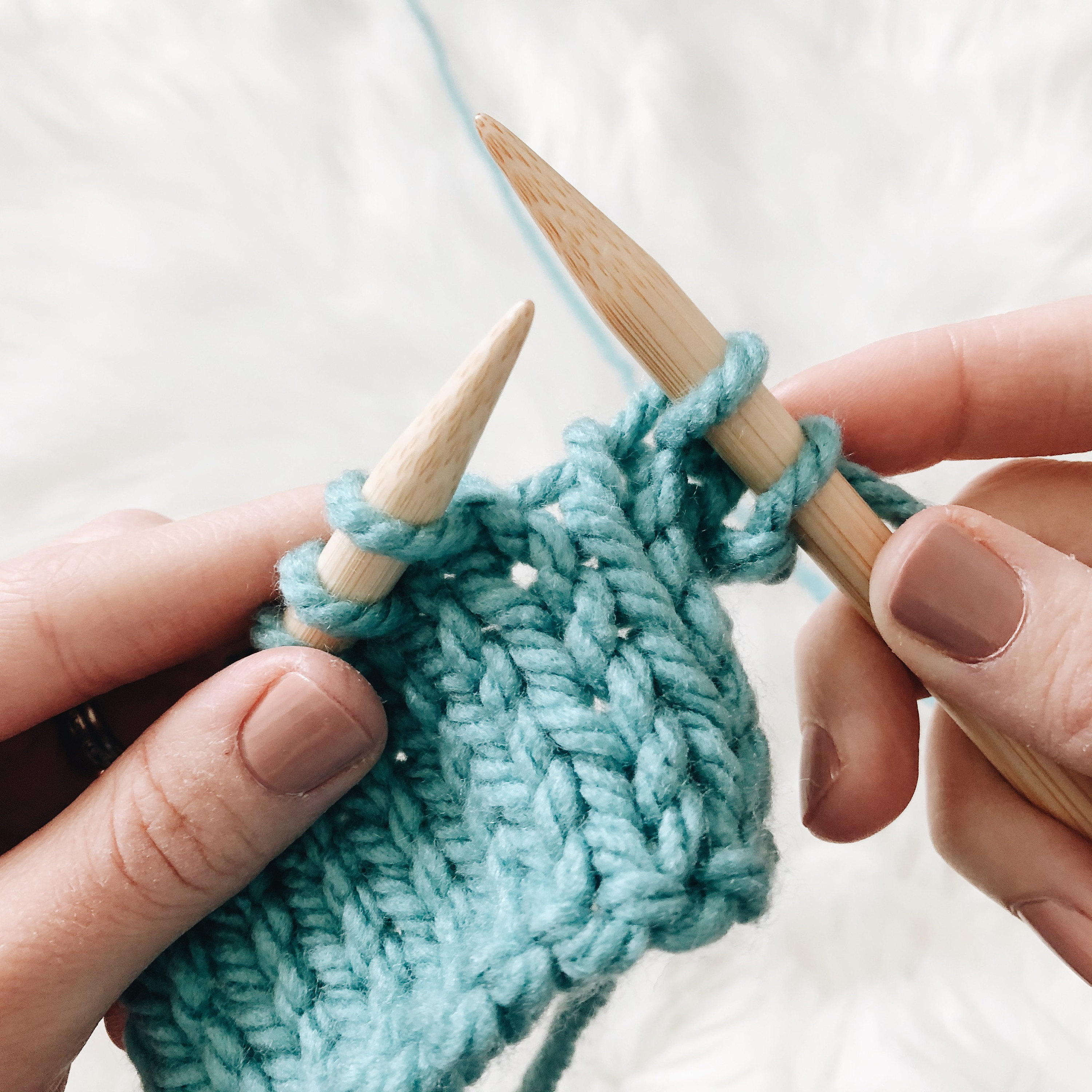
2. Insert left hand needle into stitch on the right.

3. Pull stitch up and over other stitch and off the needle.
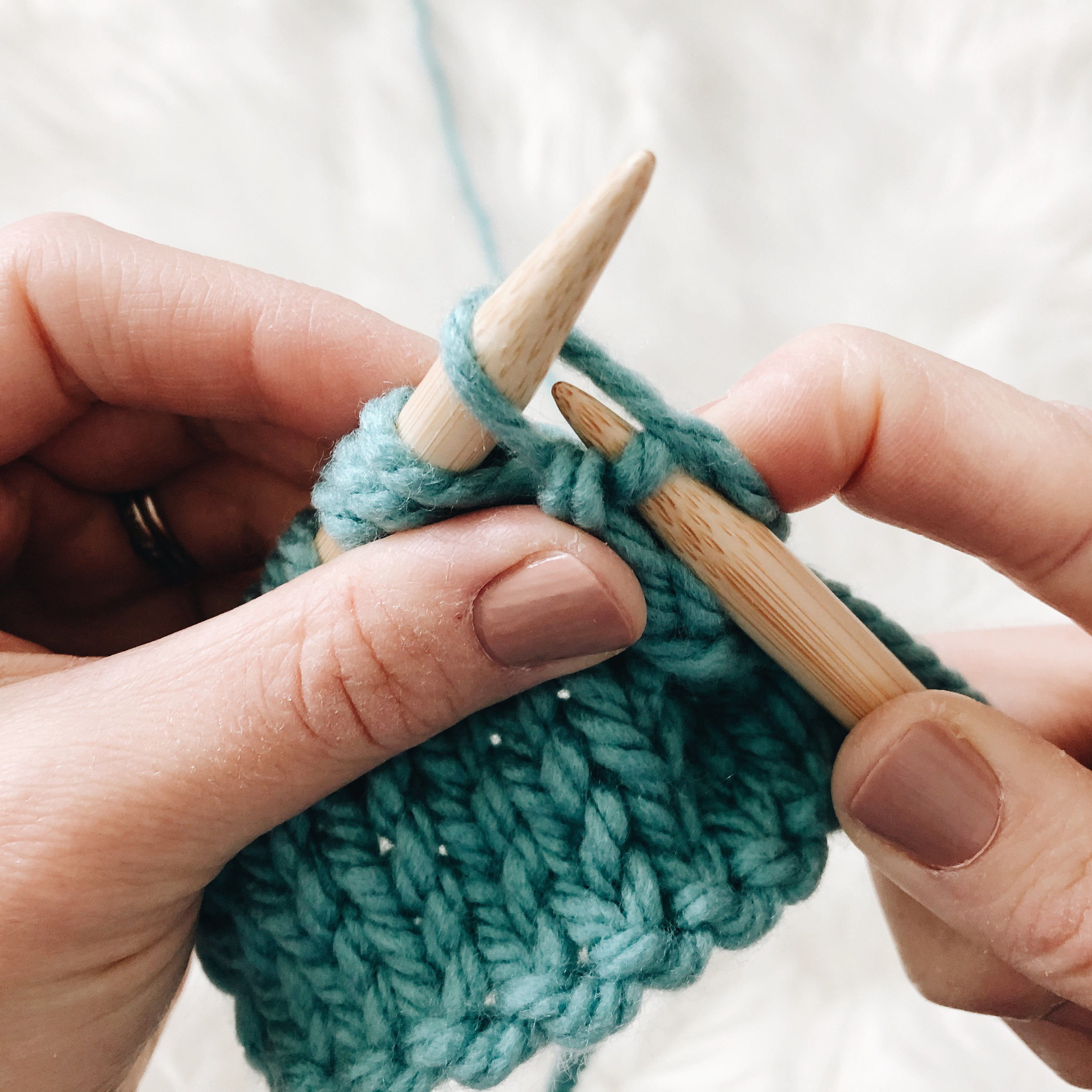
4. Knit another stitch (so you have two on your needle again) and repeat steps 2 - 3. Continue this to remove/cast off stitches. When you are at the last stitch, cut your yarn and pull the end through the loop/stitch on your needle.
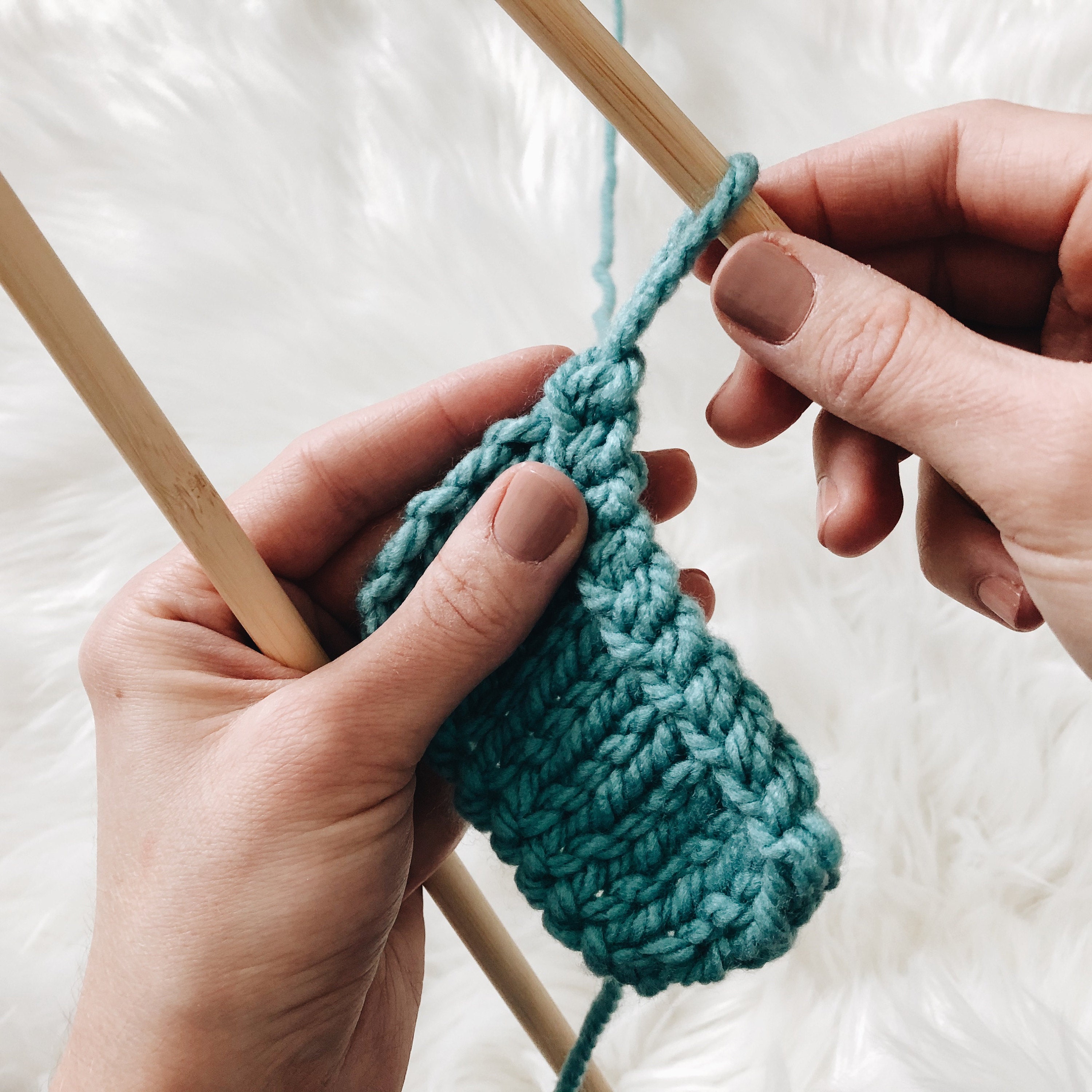
Click here for video support: How To Cast Off

